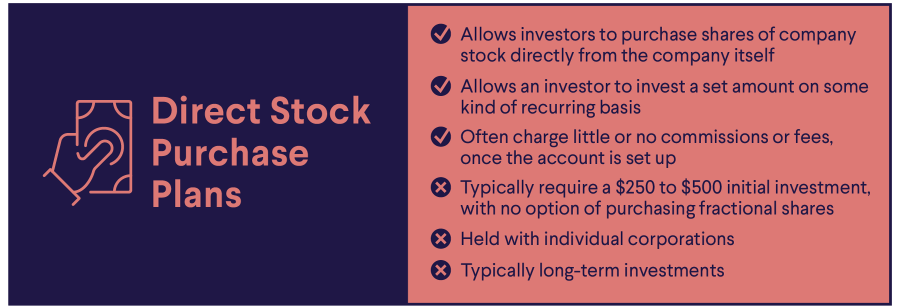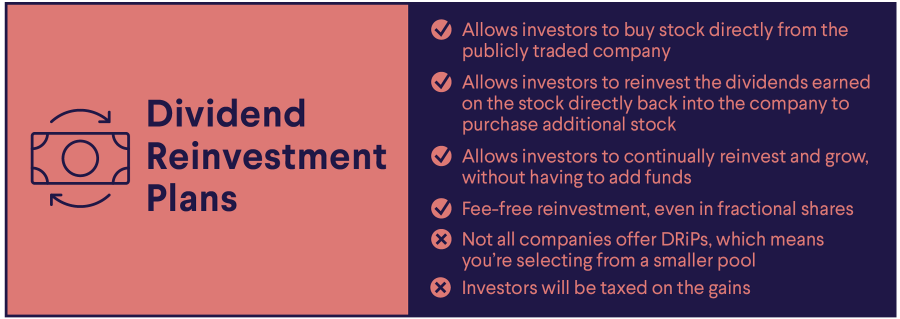Personal Loan Glossary: Loan Terms To Know Before Applying
Applying for a personal loan is a big financial decision — and it’s important to know exactly what you’re getting into before you sign any paperwork. Finance has vocabulary that may be unfamiliar to some people, which can make it difficult to understand.
This easy-to-reference glossary may help you read your new loan agreement with confidence and understand what each clause of the document means. From APR to cosigners vs. co-borrowers, we’ve got you covered.
Key Points
• Personal loans are disbursed in lump sums and repaid in equal installments.
• Key loan terms include principal, interest, APR, origination fee, borrower, and lender.
• Prepayment fees may apply for early payoff; origination fees are charged at initiation.
• Collateral secures loans, reducing lender risk; unsecured loans rely on trust and may have higher interest.
• Understanding loan terminology aids in navigating the loan process and choosing suitable loans.
What Is a Personal Loan?
Before we dive in, a quick bit of review to get us started: What is a personal loan? A personal loan is a closed-end loan that is disbursed in one lump sum and repaid in equal installments over a set amount of time.
There are many types of personal loans, and it’s common for them to be unsecured, which means there’s no collateral required.
People use personal loan funds for many reasons, from home renovations to debt consolidation to vacations.
What Are the Main Terms Used in a Personal Loan Agreement?
Understanding personal loan terminology will help you navigate the loan process with confidence.
Amortization
Amortization refers to listing the loan’s repayment schedule over the life of the loan, which the lender does when processing the loan. An amortization schedule lists the amounts of principal, interest, and escrow (if included in the loan) that each payment consists of.
A loan may be re-amortized, also. For example, the remaining repayments can be recalculated if you’re thinking of making a lump sum payment on the loan. You would be able to see the change in interest owed over the life of the loan and how much quicker the loan could possibly be paid in full. With this information, you could determine if the extra payment would be worthwhile for your financial situation.
Annual Percentage Rate
An annual percentage rate (APR) is the percentage of the loan principal you can expect to pay in interest over the course of a single year, including any additional fees that might be charged by the lender.
Application Fee
Some loans may require you to pay a fee when you apply for the loan. Not every lender charges an application fee, though, so it’s worth shopping around to find one that doesn’t.
Automatic Payment
Many lenders make it possible to set up an automatic bill payment that will be taken directly from your bank account on the loan’s monthly due date. This strategy can simplify your financial housekeeping — but make sure you’ll have enough funding in the account each month to avoid an overdraft.
Borrower
The borrower is the person or party who is borrowing money as part of the loan agreement. (Most likely, that’s you.)
Collateral
Collateral is an asset a borrower offers to secure a loan, making it less risky for the lender. For example, in a mortgage, the house is used as collateral — which is why a bank can seize and sell a home if the buyer goes into default, a process called foreclosure. Similarly, in an auto loan, the car is used as collateral, which is why it can be repossessed by the bank if the borrower fails to make the loan payments.
Co-borrower
If a loan applicant doesn’t have strong enough financial credentials to be approved for a loan on their own, they might choose to add a co-borrower to the application. This person, ideally with a more robust financial profile than the primary borrower, will also be financially responsible for the loan.
Co-borrowers are applying for a loan together and typically have shared ownership of the borrowed money or asset it purchased. For example, you and your spouse might apply as co-borrowers on an auto loan for a jointly owned car.
Cosigner
Similar to a co-borrower, a cosigner can help bolster the primary loan applicant’s chances of approval. A parent may be a cosigner on their child’s student loans. This person will be responsible for making the loan payments if the primary borrower fails to do so, but they have no ownership of the loan proceeds or asset they purchased.
Credit Agency
A credit agency, also known as a credit bureau, is a company that compiles information on individuals’ and businesses’ debts. These are the companies that calculate and report credit scores to creditors that make an inquiry.
The three main credit bureaus are Equifax, Experian, and TransUnion. You can request a full credit report from each of them once a week at no charge, which you can access at AnnualCreditReport.com .
Recommended: Everything About Tri-Merge Credit Reports
Credit History
Credit history refers to the broad scope of your experience with debt. Positive credit history is one that shows timely payments on debts owed to creditors. Negative credit history will reflect missed or late payments on debts. Some people, typically young people who have never taken on debt, will have no credit history. However, there are ways to build credit over time.
Credit Report
A credit report is a document that details your credit history, including both open and closed accounts, on-time or late payment history, accounts in default or collections, bankruptcies, liens, judgments, and other financial information. It’s important to check your credit reports regularly to detect any incorrect information and correct it as early as possible.
Credit Score
Your credit score sums up your creditworthiness with a numeric score.
Lenders most commonly refer to your FICO® Score, which can range from 300 to 850. VantageScore, which uses the same scoring range, is also used by lenders, but less commonly.
The higher your credit score, the less of a credit risk lenders tend to assume you will be. The average credit score of U.S. consumers is 717 (FICO).
Debt Consolidation
Debt consolidation is an approach to debt repayment wherein you take out one larger debt — like a personal loan — in order to pay off multiple, smaller debts such as credit cards. Doing so can help simplify your monthly finances by having fewer payments to make. You could potentially pay less in interest than you would on the former debts or lower your monthly debt payments, making it easier to meet your financial obligations each month.
Default
Defaulting on a loan means failing to repay it as agreed (for example, not making payments at all), and can lead to a loan going into collections.
Fixed Interest Rates
Fixed interest rates are those that don’t change over time. You’ll pay the same set amount of interest on the loan for its entire term. Comparing rates on personal loans from several lenders is a good way to find a rate that works with your financial situation.
Floating Interest Rates
Floating interest rates rise and lower in accordance with the market. They might also be called adjustable or variable interest rates.
Guarantor
A guarantor is similar to a cosigner or co-borrower in that they can bolster the strength of a loan application. Like a cosigner, a guarantor has no ownership of the loan proceeds or asset purchased with them. The biggest difference between a cosigner vs. guarantor is that a guarantor is only called upon to repay the loan if the primary borrower goes into default.
Gross Income
Your gross income equals the money you earn each year from working, investment returns, and other sources before deductions or withholding.
Installment Loans
Installment loans are loans that are repaid in regular monthly installments. Personal loans, auto loans, and mortgage loans are examples of installment loans.
Interest Rate
The interest rate is the base percentage charged when borrowing money. It does not include fees or other charges that may be associated with a loan.
Hard Credit Check
A lender will perform a hard credit check, or hard inquiry when you apply for a loan or open a line of credit. A large number of hard credit checks in a short period of time can have a negative effect on your credit score.
Late Payment
A late payment is a debt payment made after its due date. Since payment history is one of the most important factors used to calculate your credit score, late payments can have a major negative impact on your credit score.
Lender
The lender is the party lending the money, whether that’s a bank or credit union, or a friend or family member.
Line of Credit
If you don’t need a lump sum of money at one time, a line of credit might be an option when looking for financing. Lines of credit have limits, but the borrower can draw funds as needed instead of all at once. The borrowed funds can be repaid and borrowed again, up to the credit limit.
Recommended: Personal Loan vs Personal Line of Credit
Loan Agreement
The loan agreement is the legally binding contract you sign with your lender to initiate a loan. It will include details about each party’s rights and responsibilities. For the borrower, it may include the loan amount, interest rate, APR, potential fees and penalties, the payment schedule, and other information. It’s important to read the loan agreement carefully and ask questions about anything that you don’t understand.
Origination Fee
Some lenders might charge an origination fee when a loan is initiated — an up-front fee that remunerates the lender for the work of setting up the loan. These fees are typically a percentage of the principal and vary by lender.
Payday Loans
Payday loans are a type of short-term loan, typically for small amounts, meant to fill in a financial gap until the borrower’s next payday.
Despite their relatively low balances, these loans can be exorbitantly expensive. The Consumer Financial Protection Bureau says their rates can typically hover around 400% APR. Payday loans are usually worth avoiding in favor of other, lower-cost loan options.
Payment Terms
The payment terms of a loan are the terms and conditions the borrower agrees to when signing a loan agreement. Your payment terms can include how long the loan will last, how much will be repaid each month, the amount that can be charged for late payment, and other loan details.
Prepayment Fees
Prepayment fees, or penalties, are sometimes charged by lenders when a borrower pays their loan in full before its final payment due date. The lender will not make as much profit from the loan if the borrower pays it off early, and a prepayment fee is a way to recoup some of that loss.
Principal
The principal amount of a loan is the amount borrowed, not including interest or fees. For example, if you take out a personal loan for $10,000, that $10,000 is the principal amount. You’ll pay the lender more than that over the lifetime of the loan with interest factored in.
Revolving Credit
Revolving credit allows you to borrow funds as needed, up to your credit limit, making at least a minimum payment each month you have a balance. Credit cards are a common form of revolving credit.
Secured Loan
A secured loan requires the borrower to pledge collateral, an asset owned by the borrower, to the lender as a guarantee that they’ll repay the loan. If the borrower defaults on the loan, the lender can take ownership of the asset in repayment of the loan. Common examples of secured loans are mortgages or auto loans.
Unsecured Loan
The foundation of unsecured personal loans is trust. The lender trusts that the borrower will repay the loan without requiring collateral to back up that promise. Unsecured loans can come with higher interest rates than secured loans, however, because they present additional risk to the lender.
The Takeaway
When you’re acquainted with personal loan vocabulary, you have a better chance of getting a personal loan that fits your unique financial situation and needs, and understanding your loan agreement before signing it.
Think twice before turning to high-interest credit cards. Consider a SoFi personal loan instead. SoFi offers competitive fixed rates and same-day funding. Checking your rate takes just a minute.
FAQ
What is personal loan terminology?
Personal loan terminology is terms and definitions of words and phrases you might see in a loan agreement or other documents related to a personal loan.
What are the main terms used in a personal loan agreement?
Common references in a personal loan agreement are principal, interest, APR, origination fee, borrower, and lender.
What is the definition of a personal loan?
A personal loan is a closed-end loan disbursed in one lump sum and repaid in equal installments over a set amount of time.
Photo credit: iStock/nd3000
SoFi Loan Products
SoFi loans are originated by SoFi Bank, N.A., NMLS #696891 (Member FDIC). For additional product-specific legal and licensing information, see SoFi.com/legal. Equal Housing Lender.
Disclaimer: Many factors affect your credit scores and the interest rates you may receive. SoFi is not a Credit Repair Organization as defined under federal or state law, including the Credit Repair Organizations Act. SoFi does not provide “credit repair” services or advice or assistance regarding “rebuilding” or “improving” your credit record, credit history, or credit rating. For details, see the FTC’s website .
Third-Party Brand Mentions: No brands, products, or companies mentioned are affiliated with SoFi, nor do they endorse or sponsor this article. Third-party trademarks referenced herein are property of their respective owners.
Non affiliation: SoFi isn’t affiliated with any of the companies highlighted in this article.
Financial Tips & Strategies: The tips provided on this website are of a general nature and do not take into account your specific objectives, financial situation, and needs. You should always consider their appropriateness given your own circumstances.
SOPL-Q424-014
Read more





































